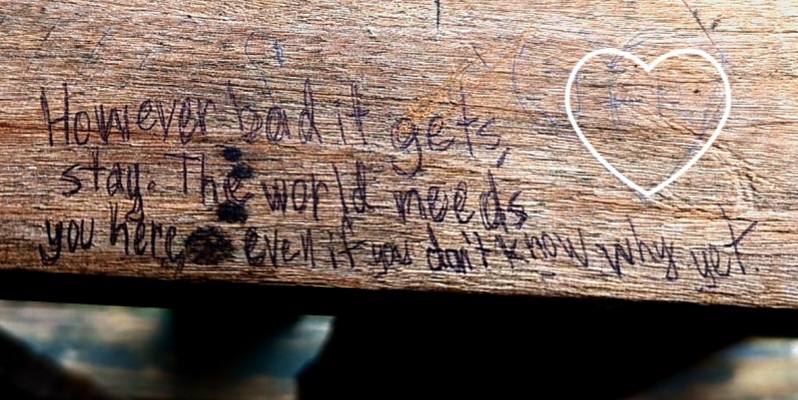Hear stories of hope and recovery from those with real experience. Or submit your own.

My Journey of Resilience
I was about 16 when I first experienced a suicidal crisis. I had already been a youth in Department of Children and Families custody and lived in foster homes since I was 14. I felt that I was in a situation I had to get out of, but I didn’t know how, and I didn’t know what I was running from.
I had no sense that I had any value. I had already been depressed well before I was 10, but it got a lot worse in state custody, and I was deciding to take my life if my “situation” didn’t change. Still, I needed a home and safety, so I asked to be adopted by a family that I knew from being in custody, and thankfully they wanted to have me too.
I had a safe space to start to heal, but healing meant going through a lot of stuff that was going to be really difficult. I struggled again with depression, much worse than before, and lost touch with reality. I had another suicidal crisis and attempted suicide.
I have no memory of being evaluated by a crisis professional; I do not know why that is the case, but it feels important and tells me it must have been a very scary experience. I remember everything about the suicidal crisis except that part. Years later, when I was 51, I asked my adopted Mom about it, and she said I didn’t need to go to a hospital because I belonged home and was safe. It felt good for me to hear my Mom say that – it made me feel like I belonged when she said it. It was also what helped me through the crisis that had happened many years before.
Though the suicidal crisis passed, I needed medication to bring me back to a stable place with depression. The medication made a world of difference, but I’ve experienced other points in my life where suicidal crisis came back.
Each time, I decide I’ll keep going and stay.
Fortunately, I’ve not had a suicidal crisis like the one I had many years ago, where I lost touch with reality and didn’t feel I had a choice other than to take my own life. I hope that does not happen again. The times suicide has come up for me since then, I’ve had room to make a choice to stay.

I’ve been able to look back on my family and personal history and see the devastating impact that suicide has had. My great-grandfather, a farmer in Orange County, VT, took his life in 1932. One of my birth uncles took his life. I saw my birth father struggle with suicidal crisis. He was a Vietnam veteran.
I come from a long line of Vermonters – settlers, soldiers, farmers, and workers. While suicide is a part of my story, I’ve inherited grit from them all. Surviving suicidal thoughts and feelings means to keep going purposefully regardless of the trauma, loss, grief, and my risk factors.
Over the years, I’ve read books about resilience, thought a lot about it, and been completely puzzled by it.
I believe resilience is not about escaping the past or getting out unwounded. For me, resilience is what Viktor Frankl and Ernest Hemingway wrote about – people choosing their way regardless of the situation and being strong in the broken places.
Having support and connection is also an integral part of resilience. I’m truly grateful for all the people who have helped me be resilient over the years, especially my adoptive parents, former teachers, and social workers from the Northeast Kingdom. They helped me make healthy choices and seek treatment and support; they showed love, patience, and support. I needed a lot of patience and still do. They helped me succeed at school and in life.
I’m also very truly grateful for my most trusted professional friends and allies in my work as a suicide prevention specialist. They have shown care and have supported me in sharing my story – and, more importantly – dedicated so much to the mission of suicide prevention.
 Dial 988
Dial 988
 text VT to 741741
text VT to 741741

